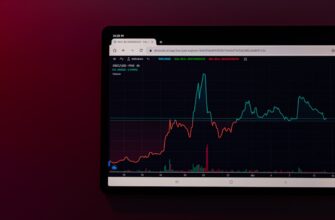Polygon (MATIC) has revolutionized Ethereum scaling with its layer-2 solutions, and airdrops offer exciting opportunities to earn free tokens. This guide breaks down exactly how to qualify for a Matic airdrop, with actionable steps, expert tips, and key FAQs.
## What Are Polygon Airdrops and Why Do They Happen?
Polygon airdrops distribute free MATIC tokens or related project tokens to active community members. Projects use them to reward early adopters, decentralize token ownership, and incentivize network participation. Historically, major DeFi protocols and NFT platforms on Polygon have conducted airdrops for users who interacted with their testnets or mainnet dApps before official launches.
## Step-by-Step Guide to Qualifying for a Matic Airdrop
Follow these essential steps to maximize eligibility:
1. **Set Up a Compatible Wallet**: Install MetaMask or Trust Wallet, connect it to the Polygon network, and ensure you have a small amount of MATIC for transaction fees.
2. **Engage with Polygon dApps**: Regularly use decentralized applications like QuickSwap, Aave, or Uniswap on Polygon. Swap tokens, provide liquidity, or stake assets to demonstrate activity.
3. **Participate in Testnets**: Join Polygon zkEVM or other test networks. Complete tasks like bridge transactions or contract interactions documented on platforms like Galxe.
4. **Hold MATIC Tokens**: Maintain a minimum balance (e.g., 50+ MATIC) in your wallet long-term. Some airdrops snapshot holdings randomly.
5. **Join Governance**: Vote on Polygon Improvement Proposals (PIPs) using platforms like Tally or Snapshot to show community involvement.
6. **Monitor Official Channels**: Follow Polygon’s Twitter, Discord, and blog for exclusive airdrop announcements and eligibility criteria.
## Pro Tips to Boost Your Airdrop Success Rate
Increase your chances with these strategies:
– **Diversify Interactions**: Use 5+ Polygon dApps monthly to broaden your on-chain footprint.
– **Track Activity**: Tools like DeBank or Zapper help audit your wallet history for qualification gaps.
– **Avoid Sybil Attacks**: Never create multiple wallets—projects detect and disqualify artificial activity.
– **Secure Your Assets**: Only connect to verified sites; revoke unused dApp permissions via Revoke.cash.
## Common Mistakes That Disqualify You
Steer clear of these pitfalls:
– **Inactive Wallets**: Dormant wallets for 3+ months are often excluded from snapshots.
– **Ignoring Testnets**: Over 60% of airdrops prioritize testnet participants.
– **Using Centralized Exchanges**: Holdings on Binance or Coinbase don’t count—only non-custodial wallets qualify.
– **Rushing Tasks**: Last-minute interactions raise red flags; consistent activity over weeks/months is key.
## Frequently Asked Questions (FAQs)
### How often do Polygon airdrops occur?
Major airdrops happen 2-3 times yearly, often tied to protocol upgrades or partner launches. Smaller NFT or token drops occur monthly.
### Is there a minimum MATIC balance required?
No universal rule, but wallets with 10-100 MATIC historically qualify more often. Focus on activity over large balances.
### Can I qualify using hardware wallets?
Yes! Ledger or Trezor wallets connected to MetaMask work perfectly. Ensure Polygon network is configured.
### Do I need KYC for airdrops?
Rarely—most Polygon airdrops are permissionless. Avoid any “airdrop” demanding private keys or payments (scams).
### How long until I receive tokens after qualifying?
Distribution takes 1-8 weeks post-snapshot. Tokens auto-appear in your wallet; no action needed.
### Are past airdrops still available?
No—eligibility depends on pre-announced snapshots. Focus on upcoming opportunities via Polygon’s ecosystem tracker.
Staying proactive with Polygon’s ecosystem is the golden ticket to airdrop success. Prioritize genuine engagement, secure your assets, and watch for official updates to turn your participation into rewards.








